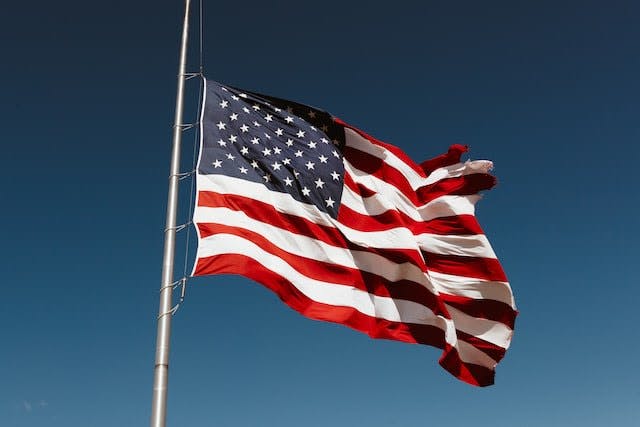Digital PR
Tracking Link Building & Digital PR Campaigns
Missing a link is as good as not building it in the first place
Tracking the success of a digital pr campaign for link building purposes is probably one of the most undervalued parts of what we do as an industry, and yet, one of the most valuable.
You don’t want to be in a position where you don’t know where your campaign has gained coverage and, even worse, not being able to report on it. In those scenarios, the hard work you’ve done is null and void.
Everything comes down to being able to highlight exactly where your campaign has ended up and often what the impact was (KPIs will obviously vary from team to team). Without those things, the people who decide if you can do more campaigns or gain a promotion will have key pieces of missing information – bad times.
Most agencies and in-house teams that run these sorts of campaigns likely have (or have fought long and hard to have) access to some of the tools I’ll mention below. Combining these as much as you can gives you the best opportunity to discover every nook and cranny of the internet where you’ve achieved coverage.
In this post I’ll discuss the tools and methods we use on a daily basis when tracking our campaigns for links and mentions. Some are paid tools and others are free. There will be a bunch more that other people use but ultimately the combination is what matters most and not just relying on one tool or method to do it, as they work in slightly different ways.
Note: this post is focused on ‘earned media’ campaigns. It’s what we focus on at Root and so this post is about tracking down those mentions and links that happen naturally from outreaching. If you’re already controlling which URL a post links to, this article isn’t really for you!
Best Tools for Tracking Links & Coverage
Here are some of the best tools and methods we use when tracking our creative campaigns:
Majestic SEO
Kicking off the list is one of our most valuable paid-for-tools – Majestic. It is one of the most used tools by SEO’s and link builders, particularly those that have been in the game a while. Historically, it’s had one of the largest indexes of all the link tracking platforms out there and therefore, one of the first places we check for links.
Majestic is super user friendly in this regard and the more you use it, the more you find it works for the different link building situations you’ll find yourself in.
For example, there’s a lot of tools where you input a URL. That’s great if you are only working on one URL, but often with a digital pr campaign that focuses on earned media, you’ll have no control if a journalist/writer links to your hosted asset (on a particular URL) or the homepage when using a line link “this research waswill conducted by [domain/brand]…”.
Majestic know this, so they have multiple ways you can look through their (historically industry leading) link index. This includes URL paths and by filtering through for their ‘first indexed’ data. For example, if you typically put your creative campaigns in a particular subfolder and you’ve got a few going on at any one time, you can use this option to keep tabs solely on your ‘area’. Nice!
Ahrefs
Another one of the heavy hitters in the game, and they continue to grow too with a bunch more people talking about ‘domain rating’ than I’ve ever heard in my decade long SEO career!
Ahrefs, like Moz and SEMrush, are the one-size-fits-all platforms. They offer keyword tracking, content tools (great for ideation and seeing what’s already working in the wild), and some really useful technical link building tools like the link intersect tool.
However, when it comes to tracking campaigns, they’re actually extremely strong here and have started to actually discover and report on more links than other platforms we use.
When comparing a piece we’ve built for Self.inc tracking Coronavirus Scams, we found that Ahrefs found 35 LRDs, compared to just 28 from Majestic. That’s a 25% increase in the number of links we’re able to find and report on.
Ahrefs
Majestic SEO
Google Alerts
Google Alerts and Talkwalker Alerts are very similar, but again it’s important to use both in combination with other platforms because they track and report back on different things. However, both are critical in discovering not only links your campaigns are building but the mentions of your campaigns that may not be linked (and therefore tools like Majestic and Ahrefs wouldn’t have discovered).
Talkwalker Alerts
We use Talkwalker Alerts as well because it discovers mentions Google Alerts doesn’t, so we find it a key part of a well rounded tracking process.
It’s extremely easy to set up and using the free version gives you everything you need, when used in conjunction with the other tools.
When tracking a creative campaign, there are a few different types of mentions you can set up alerts for:
- Brand/domain (and variations)
- Person quoted in any outreach/release
- Key hooks that feature in your subject lines
- Name of the person outreaching (they get mentions too!)
- Brand + format (i.e. “John Lewis” + survey)
That should help capture a targeted range of mentions but you will want to play around depending on how large the site or brand is that you’re working with. For example, if John Lewis is a client, setting up a Talkwalker Alert for “John Lewis” might not be the best way to go.
We then set our alerts to come through using pretty much the settings above.
Note: include ‘Twitter’ or any social channels if any team who has visibility of your work utilises social as a value channel. If you’re reporting to SEO’s, 90% won’t worry about it, but if there’s a chance your report will be shared elsewhere, it won’t hurt to have a list of social shares and their reach numbers (even if it is a vanity metric).
Google Search Console
Although an obvious and free tool to discover links, it’s not usually on many people’s lists of places to track links. In my experience, the GSC ‘links’ area tends to not find many of the most powerful links, and it’s also quite slow to do so.
However, it does cast a wide net and you’ll often be surprised with the links it’ll find that the other tools haven’t. These tend to be the lower quality placements, but at least you’ll know about them and be able to make a judgement call yourself on their value to your report.
Google’s Index & Search Operators
If you’ve made it this far in the post, you’ve now stumbled upon my favourite link tracking tool – Google.
Like the alerts we set up in Google Alerts and Talkwalker Alerts, using the Google index using various searches and simple operators can give you a great method of finding the links from pages Google are indexing. It’s likely found more, but Google is very quick and your most powerful links will stick out like a sore thumb.
This part will obviously depend on when your campaign went live, but to make things easier for yourself, first filter to only show results in the past 24 hours/week. I often use 24 hours because I’m obsessed…
Then, you want to use combinations like:
- “Domain” [keyword from campaign]
- “Brand name” (if different to domain) [keyword from campaign]
- “[persons name who provided comments on campaign]”
- “[part of the quote your outreached]”
- “[exact line from a popular placement you achieved i.e. Forbes]”
Note: Using quotation marks in a Google search will mean your search only returns pages with an exact match phrase. Without it, you’ll receive a list of pages with mentions or semantically related to the words you’ve used – not what you really want here.
As always, I hope that’s really useful for anyone looking to take their link reporting and tracking game to the next level. Getting this right will almost certainly ensure the full value of your work is being recognised.








